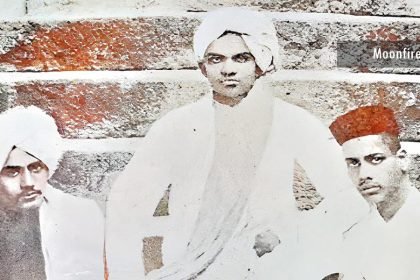Carl Edward Sagan was born on Nov. 9, 1934, in Brooklyn, New York. He attended college at the University of Chicago, where he earned his Ph.D. in astronomy and astrophysics in 1960, at the age of 26.
After completing postdoctoral work, he taught at Harvard University. When that school declined to grant Sagan tenure status in 1968, he took a position with Cornell University in New York, serving as the director for the Laboratory for Planetary Studies and the associate director of the Center for Radio Physics and Space Research.
Diagnosed with the rare bone-marrow disease myelodysplasia, Sagan underwent three bone-marrow transplants over the course of his life. Due to complications from the disease, he contracted pneumonia, which led to his death on Dec. 20, 1996, at age 62.
Although Sagan was most widely known for his scientific communication with the general public, he made many significant scientific contributions as well.
In 1977, Sagan began work on the television series “Cosmos: A Personal Voyage,” serving as writer and presenter. The first show aired on the Public Broadcasting Service in October of 1980. Between new episodes and reruns, the show was the most widely watched series on U.S. public television for nearly a decade. The show won an Emmy and a Peabody award and was broadcast around the world. Sagan’s book of the same name (Random House, 2013) stayed on The New York Times best-seller list for 70 weeks and was the best-selling science book ever published in the English language at the time.
In addition to “Cosmos,” Sagan also appeared as a guest on “The Tonight Show Starring Johnny Carson” 26 times, calling it “the biggest classroom in history.”
At Sagan’s request, NASA commanded its Voyager 1 spacecraft to turn its camera on Earth, creating an image that came to be known as the “Pale Blue Dot,” one of the most famous pictures of Earth from space ever taken. The photo is so iconic that NASA even released an updated version of the “Pale Blue Dot” to celebrate its 30th anniversary in 2020. Sagan used that name as the title of another book. The sequel to “Cosmos,” Sagan’s “The Pale Blue Dot” (Random House, 1994) toured the solar system and the galaxy, arguing for the necessity of planetary science and the exploration of Earth’s closest neighbors. This book, too, was widely well-received by the general public.
An earlier nonfiction book by Sagan, “The Dragons of Eden: Speculations on the Evolution of Human Intelligence,” (Random House, 1977) received the 1978 Pulitzer Prize for general nonfiction.
Although the majority of Sagan’s work was nonfiction, he used fiction to present scientific principles in his 1985 novel “Contact” (Simon & Schuster, 1985). The story revolved around interactions between the human race and an advanced civilization of extraterrestrials. The novel sold over a million copies in its first two years of publication, and in 1997, it was released as a major motion picture starring Jodi Foster as main character Ellie Arroway (who was inspired by real-life SETI astronomer Jill Tarter).
In 2015, the Los Angeles Times announced that Warner Bros. Entertainment Inc. was working with Sagan’s widow, Ann Druyan, on a film about the scientist’s life. The production company hasn’t released any details about the movie since the initial announcement.
In Sagan’s New York Times obituary, then-President of the National Academy of Sciences Bruce Alberts said, “Carl Sagan, more than any contemporary scientist I can think of, knew what it takes to stir passion within the public when it comes to the wonder and importance of science.”
When Sagan was in graduate school, many scientists thought the planet Venus was similar to Earth. As part of his doctorate research, Sagan computed the first greenhouse model for Venus’ atmosphere, which revealed a higher temperature than previously suspected. Later, he suggested that dust storms on Mars caused the seasonal changes observed on that planet, and he also wrote a series of papers on the organic chemistry of Jupiter‘s atmosphere.
As an advisor to NASA, Sagan helped design and manage the Mariner 2 mission to Venus, the Mariner 9 and Viking trips to Mars, the Voyager system to the outer solar system, and the Galileo mission to Jupiter. He also helped brief astronauts prior to their trips to the moon.
Sagan helped lay the groundwork for two new scientific disciplines: planetary science and exobiology, or the study of potential life on other planets. He co-founded and served as the first president of The Planetary Society, an organization dedicated to inspiring and involving the public in space exploration. And he promoted the Search for Extraterrestrial Intelligence (SETI) Institute, where he served as a trustee.
Article By – Space.com ,








 If you want to use your preferred UPI app, our UPI ID is raj0nly@UPI (you can also scan the QR Code below to make a payment to this ID.
If you want to use your preferred UPI app, our UPI ID is raj0nly@UPI (you can also scan the QR Code below to make a payment to this ID.





